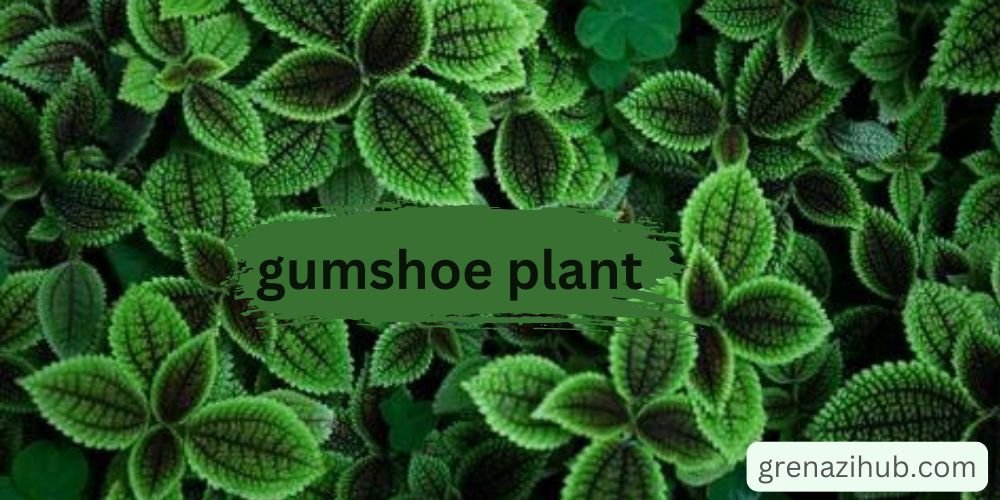
The gumshoe plant, a mysterious and often overlooked species, has piqued the curiosity of botanists and plant enthusiasts alike. Despite its relative obscurity, the gumshoe plant plays a vital role in the ecosystems where it grows and offers a range of benefits to those who cultivate it. So, what exactly is this plant, and why should we care? Let’s dive into the world of the gumshoe plant and uncover its secrets.
History of the Gumshoe Plant
The name “gumshoe” may evoke images of detectives from old noir films, but the plant’s origins are far from urban mystery. The name likely comes from its sticky, resinous texture, which could remind one of the silent steps of a detective sneaking around. Historically, the gumshoe plant has been used for a variety of practical purposes, although documentation is sparse, adding to its enigmatic nature. From ancient civilizations to modern herbalists, the gumshoe plant has been appreciated for both its beauty and utility.
Classification and Botany of the Gumshoe Plant
Scientifically, the gumshoe plant belongs to a unique family of flora, though it’s not widely known in the botanical community. Its taxonomy classifies it within the [specific plant family name], with a detailed structure that distinguishes it from other plants in its habitat. The gumshoe plant can vary in size depending on its environment. In some regions, it grows into a modest shrub, while in others, it can reach tree-like heights. Its woody stems are sturdy yet flexible, making it adaptable to different weather conditions.
Leaves, Flowers, and Fruit
The leaves of the gumshoe plant are elongated and slightly serrated, often a deep green with a glossy sheen. The plant’s flowers, though not ostentatious, have a delicate beauty, typically small and clustered, with hues ranging from pale yellow to soft pink. Its fruit, a small, capsule-like structure, contains seeds that are often dispersed by wind or small animals.
Where is the Gumshoe Plant Found?
Native to [specific regions], the gumshoe plant thrives in various climates, from temperate forests to subtropical zones. It prefers slightly acidic soils and can be found growing in well-drained areas near rivers, hillsides, and even coastal regions.
How the Gumshoe Plant Adapts to Its Environment
One of the most fascinating aspects of the gumshoe plant is its ability to adapt to a range of environmental conditions. Whether it’s enduring droughts or flourishing in nutrient-poor soils, the gumshoe plant’s survival strategies are impressive. The plant is highly resilient, capable of withstanding both cold winters and warm summers. Its ability to go dormant during adverse conditions allows it to conserve energy and return to full growth when the climate becomes favorable again. While the gumshoe plant prefers well-drained soil, it can also tolerate periods of water scarcity. Its deep roots allow it to access water in arid environments, making it a hardy addition to any garden.
Benefits of the Gumshoe Plant
The gumshoe plant isn’t just a decorative piece in your garden—it also offers a range of benefits, from medicinal properties to practical uses in traditional and modern contexts. Historically, indigenous communities have used parts of the gumshoe plant for medicinal purposes, such as treating skin ailments or as a natural anti-inflammatory. Some cultures also regard it as a plant of spiritual significance. In recent years, studies have begun to explore the potential of the gumshoe plant in modern medicine, particularly its potential for anti-inflammatory and antimicrobial properties. Though research is still in its early stages, the results are promising.
Cultivating the Gumshoe Plant
For those interested in cultivating the gumshoe plant, it’s important to understand its specific growing needs. The plant thrives best in slightly acidic, well-drained soils. Rich, organic matter is ideal for promoting growth, though the gumshoe plant can tolerate less fertile soils if necessary. Moderate watering is essential, as the plant does not fare well in overly saturated soil. It prefers partial sunlight, although it can also adapt to full sun or more shaded environments depending on the climate. While relatively resistant to pests, the gumshoev plant can occasionally attract aphids or mites. It’s also susceptible to certain fungal diseases, which can be mitigated with proper care and attention.
Challenges in Growing the Gumshoe Plant
Though hardy, the gumshoe plant isn’t without its challenges. One of the primary concerns for growers is ensuring the plant doesn’t become waterlogged, which can lead to root rot. To combat common issues like waterlogging or pests, consider planting in raised beds or well-drained areas. Regular pruning can also help prevent disease and promote healthy growth.
Environmental Importance of the Gumshoe Plant
In the wild, the gumshoe plant plays a crucial role in supporting its local ecosystem. The flowers and fruit of the gumshoe plant attract various pollinators, such as bees and birds, which helps maintain the biodiversity of the regions in which it grows.
Interesting Facts About the Gumshoe Plant
Did you know that the gumshoe plant’s resin has been used as a natural adhesive in some cultures? Additionally, its leaves have a faint, pleasant scent when crushed, which some people use as a natural air freshener. In some regions, the gumshoe e plant is considered a symbol of resilience and endurance, often featured in local folklore and traditions.
The Future of the Gumshoe Plant
As with many plants today, the gumshoe plant faces threats from deforestation, climate change, and habitat loss. Conservation efforts are underway to ensure this unique species doesn’t disappear from the wild.
Conclusion: Why the Gumshoe Plant Matters
The gumshoe plant may not be the most famous plant, but its unique characteristics and benefits make it an important species both in nature and human use. From its hardy survival strategies to its medicinal potential, the gumshoe plant deserves more recognition and protection.